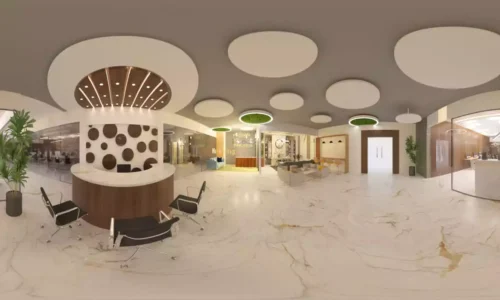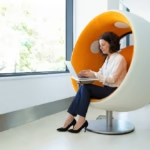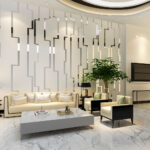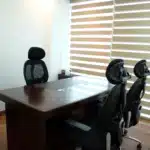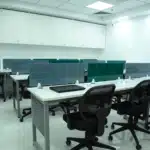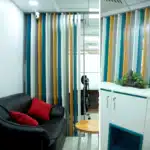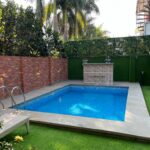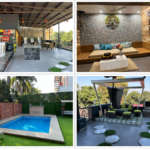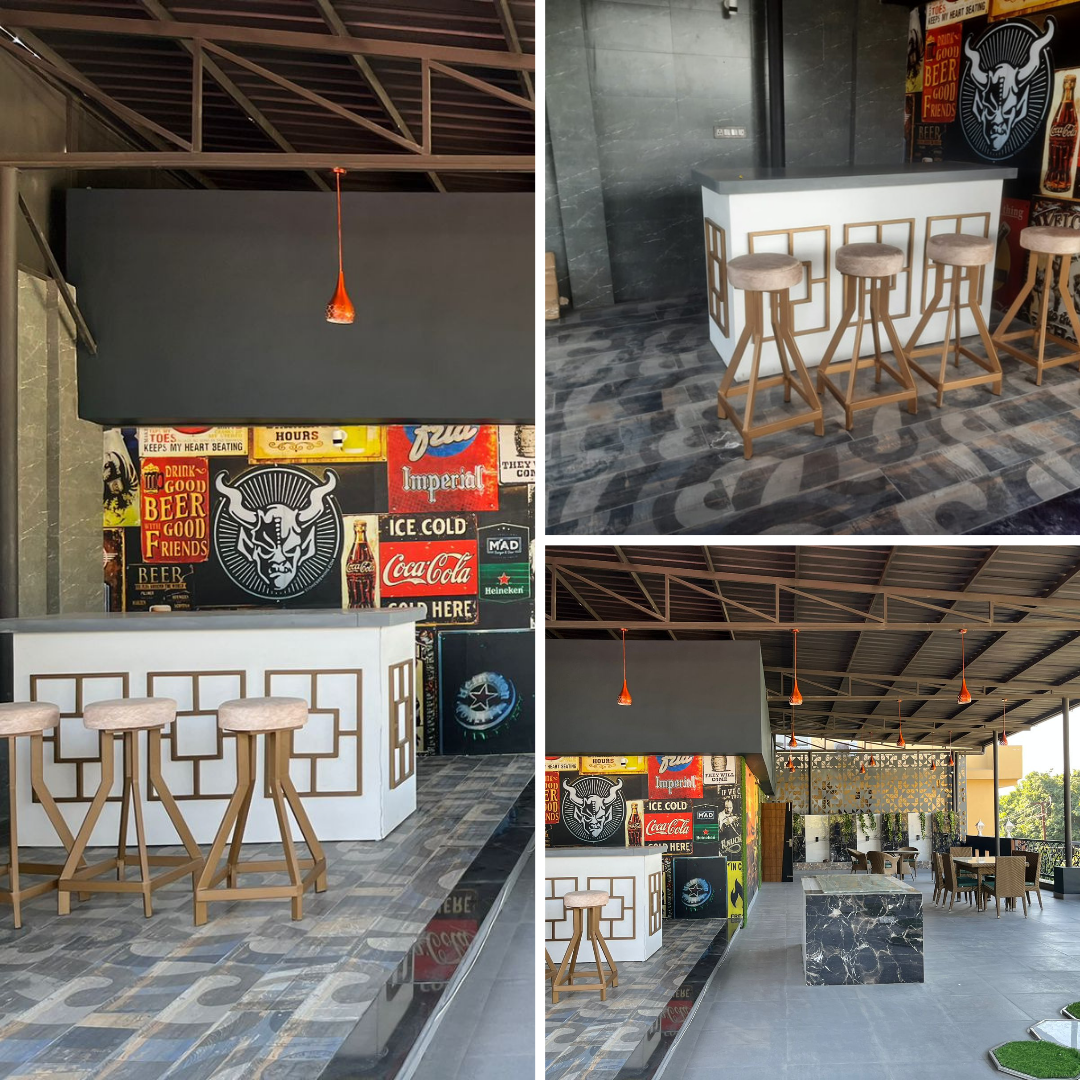Office Design ROI: How Good Office Design Helps You Save Money
- Amodini Systems
- 0 Comments
Office design ROI means understanding how a well-planned office saves money for a business. Many people think office design is only about choosing colors, furniture, or décor. But in reality, good office design directly affects productivity, employee comfort, brand image, and long-term costs. When a company invests in smart office design, it reduces operational expenses and improves work performance. This article explains how office design ROI works and why it matters for every business.
What Is Office Design ROI?
Office Design ROI (Return on Investment) is the value a company gains by improving or redesigning its office space. It measures how much money the business saves or earns after spending on interior design. This includes better employee performance, lower energy costs, reduced maintenance, fewer sick days, and improved customer trust. Good design is not just an expense—it is an investment that brings real financial benefits over time.
Why Good Office Design Saves Money
A well-designed office creates a positive work environment. It helps employees work faster, feel comfortable, and make fewer mistakes. A comfortable workplace also reduces turnover, meaning fewer hiring costs. Smart layouts reduce wasted time and space, while better lighting and ventilation lower electricity bills. When employees feel good in their workplace, they work better, stay longer, and produce more. This leads to real savings for the business.
How Office Design Affects Productivity
Office design has a direct impact on how employees perform their daily tasks. A cluttered or poorly planned office slows down work, creates distractions, and affects focus. But a clean, organized, and thoughtfully arranged office helps people think better and complete tasks faster. When walking distance, seating positions, storage areas, and equipment placement are optimized, employees save time throughout the day. Over one year, even small time savings result in large financial benefits.
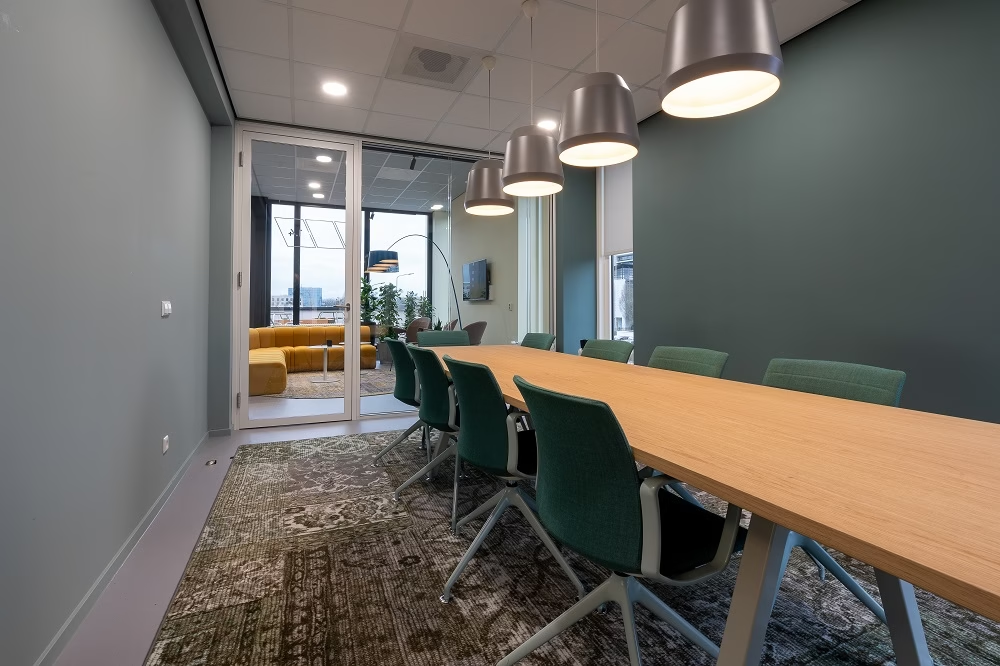
The Role of Lighting in Saving Costs
Lighting is one of the biggest factors in office efficiency. Poor lighting tires the eyes and causes headaches, reducing work quality. Good lighting makes people more alert and improves accuracy. Natural lighting reduces the need for artificial lights, lowering electricity bills. LED lights also last longer and consume less energy, helping businesses save money long-term. A well-lit office creates a healthier and more productive work environment.
Importance of Ergonomic Furniture
Ergonomic chairs, desks, and workstations reduce physical strain on employees. When workers sit in uncomfortable positions, they experience back pain, neck pain, and fatigue. This leads to more sick leaves and lower productivity. Investing in ergonomic furniture reduces health problems and saves medical costs. Employees feel comfortable and can work longer without discomfort, which increases output and reduces absenteeism.
Smart Space Planning Reduces Rent Costs
Many offices waste space without realizing it. Poor layouts lead to unused corners, congested work areas, and inefficient storage. Smart space planning uses every square foot properly. When space is optimized, companies need smaller offices. This reduces rent and maintenance costs. A well-planned office can accommodate more employees in less space without making the environment crowded.
Better Design Reduces Maintenance Expenses
High-quality materials and smart design reduce repair and replacement costs. Cheap furniture or low-grade materials break quickly and need frequent fixes. But good quality items last longer and require less maintenance. Durable flooring, strong desks, and sturdy chairs save money in the long run. Good office design also considers wiring, cables, and appliances to avoid future problems.
Improved Employee Morale Saves Money
Happy employees contribute to higher productivity. A pleasant office environment boosts mood, encourages teamwork, and reduces stress. When employees feel valued, they stay with the company longer. Lower employee turnover means fewer recruitment costs. Training new staff is expensive, so keeping existing employees saves a lot of money. Good office design directly supports employee satisfaction.
How Office Design Impacts Brand Image
A well-designed office leaves a positive impression on clients and visitors. It shows professionalism, trust, and confidence. A strong first impression can lead to more business deals and partnerships. Clients feel comfortable and respected when your workspace looks clean, modern, and organized. This indirectly increases revenue and builds long-term relationships.
Cost Benefits of Green and Sustainable Design
Sustainable design reduces electricity bills, water usage, and waste. Using energy-efficient systems, better insulation, and eco-friendly materials saves money over many years. Solar lighting, natural ventilation, and recycled materials reduce operational expenses. Green offices also create healthier environments, reducing sick days and medical costs.
Table: How Good Office Design Saves Money
| Factor | How It Helps | Money Saved |
|---|---|---|
| Lighting | Reduces energy use and improves focus | Lower electricity bills |
| Ergonomic Furniture | Prevents health issues | Fewer sick leaves and medical expenses |
| Space Planning | Uses office area efficiently | Reduced rent and storage costs |
| High-quality Materials | Last longer and need fewer repairs | Lower maintenance costs |
| Employee Comfort | Boosts morale and productivity | Higher work output |
| Green Design | Reduces energy and resource usage | Lower long-term expenses |
Technology Integration Saves Operational Costs
Modern offices use technology to improve efficiency. Smart lighting systems turn off automatically when not in use. Digital meeting rooms reduce scheduling issues. Wireless charging stations and organized cable systems prevent workplace hazards. Technology also helps employees work faster and reduces downtime. Good office design includes these features to save time and money.
Layout Design Reduces Time Wastage
Employees waste time when the office layout is inconvenient. If printers, meeting rooms, or storage areas are too far, it slows down daily work. A good layout places essential tools and spaces within easy reach. Simple layout improvements can save several minutes per employee daily. Over months, this results in large time and cost savings.
Better Air Quality Improves Health and Reduces Sick Leaves
Fresh air and proper ventilation reduce allergies, headaches, and fatigue. Poor air quality leads to more sick leaves and lower productivity. Good office design includes proper ventilation systems, plants, and air purifiers. Fresh, clean air keeps workers healthier and more active, saving medical costs and increasing performance.
Noise Control Improves Focus and Saves Time
Noise distractions reduce concentration and slow down work. Office design that includes noise-absorbing panels, carpets, and quiet zones helps employees stay focused. Meeting rooms with soundproofing also prevent disturbance. Noise control increases accuracy and reduces errors, leading to cost savings in the long run.
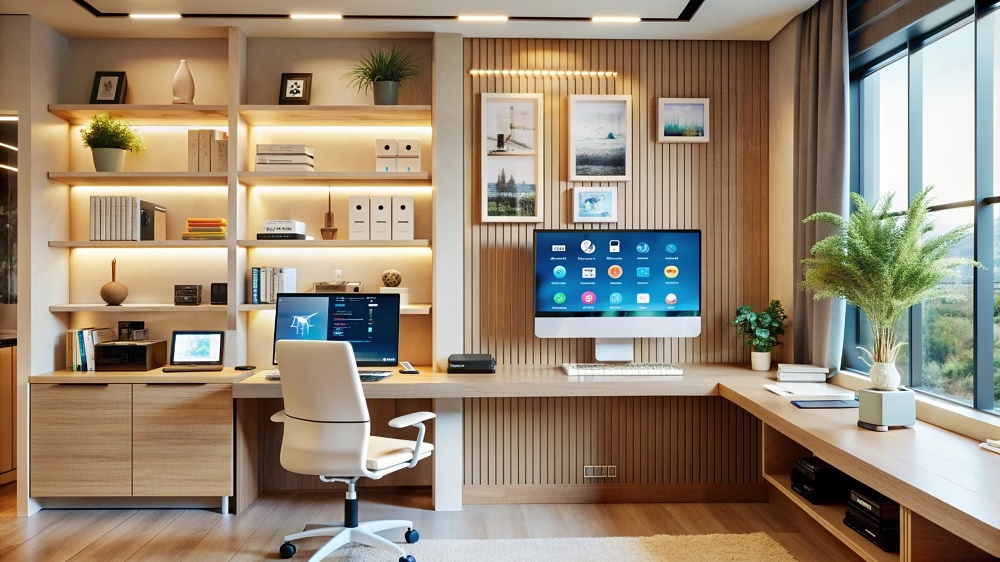
ROI Grows Over Time
Office design ROI does not show only in the first month. It grows slowly but strongly over time. As employees stay healthier, feel happier, and work better, the company saves more money every year. Long-lasting materials, better layouts, and energy-efficient solutions reduce long-term expenses. Good office design is a one-time investment that continues to benefit the company for many years.
Final Thoughts
Good office design is not just decoration. It is a powerful investment that saves money, increases productivity, and improves employee well-being. A well-designed workplace boosts morale, reduces energy costs, lowers maintenance expenses, and builds a professional brand image. Office design ROI shows that smart interiors lead to real financial benefits. When a company invests in quality design, it reduces expenses and increases long-term growth.


